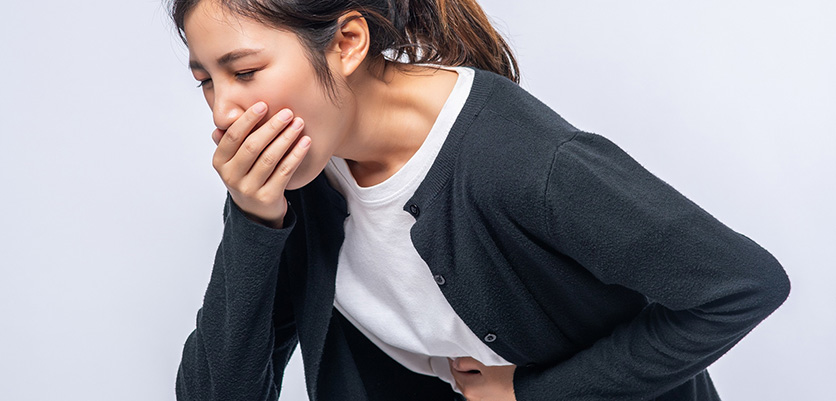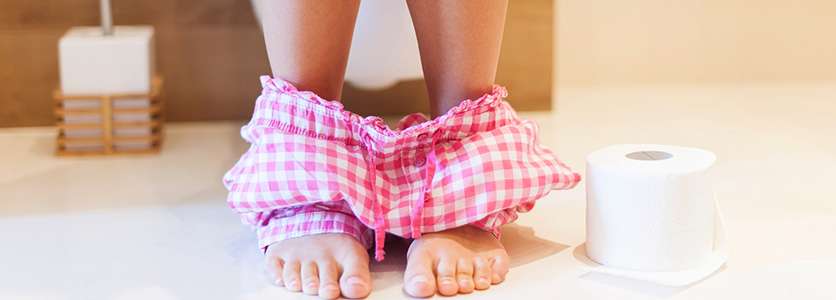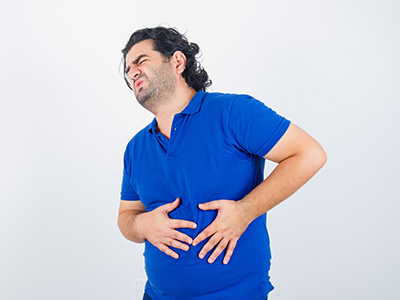Diarrhoea & Vomiting; Not an Ideal Weightloss Option!
July 11, 2023

Unless you follow a scarily restricted diet, everyone at some point will have come down with a bout of D&V, the physician’s label for the symptom complex of diarrhoea and vomiting.
The basic principle is that the body has ingested something it does not want, and is proceeding to expel it – through whichever orifice is nearest. What this ‘something’ is does not matter from the body’s point of view. Out it goes anyway!
Not just from bad food
Sometimes (usually) this process is self-limiting, and ceases once it has accomplished its task. However, both vomiting and diarrhoea cause loss of sodium. If the sodium level drops, it causes diarrhoea and vomiting. This was the vicious cycle which caused so many to die from cholera in the past. There are three main classes of infective organism contributing to “food poisoning” – viruses, bacteria, and protozoa. They do not necessarily come onboard via food, but also arrive from touching an unclean surface. This is why washing hands and not biting fingernails are good practice.

As with other infection types, viruses are by far the most common cause of D&V. Bacteria include salmonella, shigella, Campylobacter and some subspecies of E Coli. Botulism is a rare and rather nasty subtype. Protozoans are represented by Giardia and Entamoeba.
The different organisms do vary in presentation, but not with any degree of consistency. An “Oh my God, please kill me now!” cramping with intense double barrelled simultaneous fluid expulsion is a hallmark of amoebic dysentery but is also not beyond a norovirus. A brief 24-hour bout of vomiting that resolves simultaneously can turn out to be salmonella.
Managing D&V

Management of D&V is pragmatic. The expulsion process is the body’s idea of cure, so it is not a good idea to get in its way. Unless you are about to give an important lecture, or stuck on a long coach journey without an onboard toilet, then avoid Imodium and its cousins. By lengthening the contact time in the gut, they give the hostile organisms more time to get on board. The main objective is to replace what is being lost via electrolyte solutions. Clear fluids (you can see your fingers through the glass) are beneficial. Denser fluids should be avoided. Cow’s milk should especially be avoided, since it contains a protein that the body thinks is norovirus.
Most of the time, clear fluids and patience is all that is required. Pathogens will be expelled within the first 24 hours or so and symptoms settle, with maybe a few loose stools as the bowel flora recovers from the disruption.
Most of the time, clear fluids and patience is all that is required. Pathogens will be expelled within the first 24 hours or so and symptoms settle, with maybe a few loose stools as the bowel flora recovers from the disruption.
More investigation
If things are not settling, then it is stool sample time (the fresher the better). Microscopy will show the presence or absence of blood cells, white cells, ova and parasites. This will let the clinician identify the various possible intruders. More recently PCR technology has given us the stool panel. This is not an avante garde house furnishing, but is instead a set of tests that precisely identifies the causative organism, right down to its shoe size in some of the more extensive ones. Treatment is simple, though not necessarily pleasant. The bacterial infections generally respond to Ciprofloxacin or Azithrmomycin – although some resistance can develop. Amoeba and Giardia require Metronidazole or Tinidazole – both of which demand complete abstention from alcohol.
Enjoy those raw oysters!
Dr Julian Martin Chadwick - Internal Medicine Physician
Columbia Asia Hospital - Saigon
